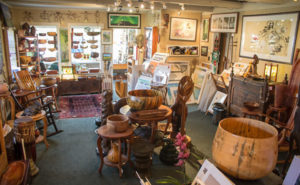Hawaiʻi’s tropical beaches are among the most beautiful in the world. Miles of sandy shoreline stretch out along the coast of the Pacific Ocean, enticing visitors from around the world. In addition to the golden sandy beaches of paradise, the Big Island of Hawaiʻi also boasts majestic beaches that glitter with colored sand in shades of black, green and white.
Black Sand
Black sand beaches are made up of tiny fragments of lava. When hot magma flows into the ocean, it cools down instantly and shatters into black sand. Because black sand retains heat, Hawaiian green sea turtles, or honu, prefer black sand beaches to nest and bask in the sun. Visitors hoping to catch a glimpse of these ancient creatures are sure to have luck finding them on a black sand beach.
Located near the southern tip of the Big Island is Punaluʻu Beach. One of the most famous beaches in the state, Punaluʻu (also known as Black Sand Beach) is nestled between the quaint town of Naʻalehu and Volcanoes National Park. The black crystal sand glimmers with silver flecks and is easily accessible to visitors wanting to spend the day watching sea turtles, sunbathing or picnicking.
Kalapana is another black sand beach currently forming in the Puna District of the Big Island. The former beach was swept away in the 1986 lava flow and today visitors come for a rare glimpse of new earth and a new beach being formed.
Green Sand
Papakōlea Beach on Hawaii Island is located at the Big Island’s southernmost tip.
It’s also known as Mahana Beach, and is one of only four green sand beaches in the world. The mineral olivine, also known as “Hawaiian Diamond,” is a common component of Hawaiian lava and gives the sand its green color. Olivine is dense and tends to accumulate on the beach without washing back into the ocean. Getting to Papakōlea Beach requires a moderate to strenuous three-mile hike through lava fields. Visitors are advised to take lots of water and wear sturdy hiking shoes.
White Sand Beaches
White sand beaches of Hawaii Island are primarily made up of shells from marine organisms and coral fragments. Waves and marine life join forces to pummel reefs and shells that wash up on the shoreline. White sand beaches on the Big Island are more powdery and fine than golden sand, so while they may not be great for building sand castles, the pristine white sand makes a great base for laying out your beach blanket and relaxing under a palm tree.
One of the most popular white sand beaches on the Big Island is Hapuna Beach, located on the Kohala Coast on the west side of the island. Regularly voted one of the best beaches in the world, Hapuna offers perfect conditions for swimming, body boarding and snorkeling. But don’t let the serenity of the waves fool you, stay in sight of the lifeguard if possible and never turn your back on the ocean.







